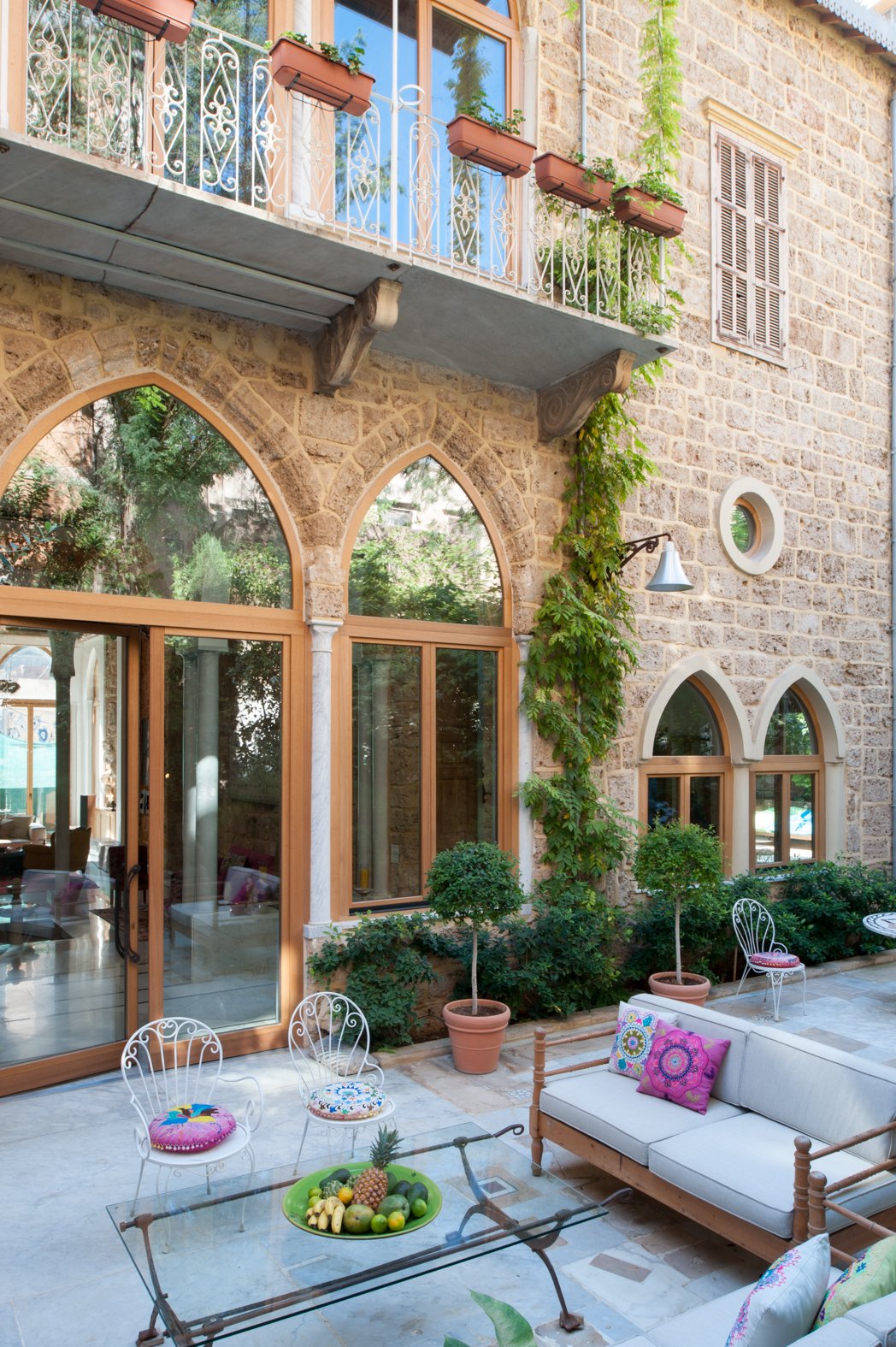Beirut hotelier reinvents family estate
By Sean Mathews
Courtyard and pool of newly renovated Arthaus Beirut Hotel. Photo courtesy of Arthaus International
Beirut is no stranger to tasteful boutique hotels.
Villa Clara, the distinctive blue french colonial period building in the boho neighborhood of Mar Mikhael comes to mind. So too does Hotel Albergo. An art deco Relais & Chateaux property with a serene rooftop pool and the Al Dente restaurant frequented by Beirut’s well heeled.
Both conjure fine memories of cocktails imbibed to the sound of conversations in snappy Lebanese Arabic and languorous french in the coolest of Arab, if not Mediterranean, capitals.
Now, the city Jan Morris described as “the last of the middle eastern fleshpot” will welcome a new entry to that list this spring with the opening of Nabil and Zoe Debs’ Arthaus Beirut. The couple are long time fixtures in Lebanon’s art scene and are well known for the exhibitions they host during the Beirut Art Fair.
“We do not collect for the sake of creating a collection, but when we feel a particular piece touches our soul or raises the right questions it then needs to become part of our DNA either by owning it in our memory or by acquiring it,” Nabil Debs said in an interview with Levendeia.
With the completion in 2016 of their Berkshire project, the River Arts Club, the couple turned their attention to transforming the Debs’ family estate in the trendy Gemmayze neighborhood of Beirut into a hotel and art space.
Restoration work which had originally begun in 2012 on one of the estate’s four houses for the couple’s private use soon took on new meaning.
Photo courtesy of Arthaus International
“My wife and I initially designed and executed the interior of the main house as our home, fitting our way of life. The evolution of the design and its execution was most exhilarating as it grew organically,” Debs said.
Each of the four buildings on the Debs’ property have been restored for the new hotel. Both the exterior architecture and interior design are a mix of differing styles, like the city and the Levant region’s own amalgamous history.
The oldest building, Burj Hanna el Debs, dates back as far as the late 1700’s. The last building, a three story ottoman style house constructed in the late 1800’s by Nebil Deb’s great-grandfather for his children bares nascent art deco inspiration.
During the renovation the owners discovered an even older history. Monolithic greek and roman columns and cut stone floors were found on site and archeologists told the Debs’ that the ruins pointed to the strong possibility of a roman villa once having been located on site.
This history fits especially well with the interior design of the hotel.
“It is heteroclite in shape and periods. Using the existing furniture we added pieces collected over the years in London and locally to enhance the architectural features,” Debs said.
He added, “The MENA region (Middle East and North Africa) and Beirut in particular is a melting pot of creativity and design. Most established designers inspire and help burgeoning ones and at the same time feed on their creativity.”
Debs said he wants Arthaus Beirut to aide young designers and creatives in the MENA region by giving them a space to display their works.
A permanent collection of the owners’ work will be on display and they will host temporary exhibitions. In a nod to the french salon’s of the 20th century Debs said they aim to open a space where creatives in the Middle East can come to meet, showcase, and discuss their work.
Interior design of the hotel. Photo courtesy of Arthaus International
I asked Debs what the challenges were in opening a luxury art hotel in a country reeling from economic collapse. Years of corruption and mismanagement by political parties came home to roost in the country last fall, even before the dual hit of coronavirus closures and a historic oil price collapse.
Debs was optimistic, “I know that we are very close to a low point. In a cynical way this is perhaps the best place to start such a project. In crisis, wars and despair comes creativity, solidarity between all walks of life and social awareness.”


